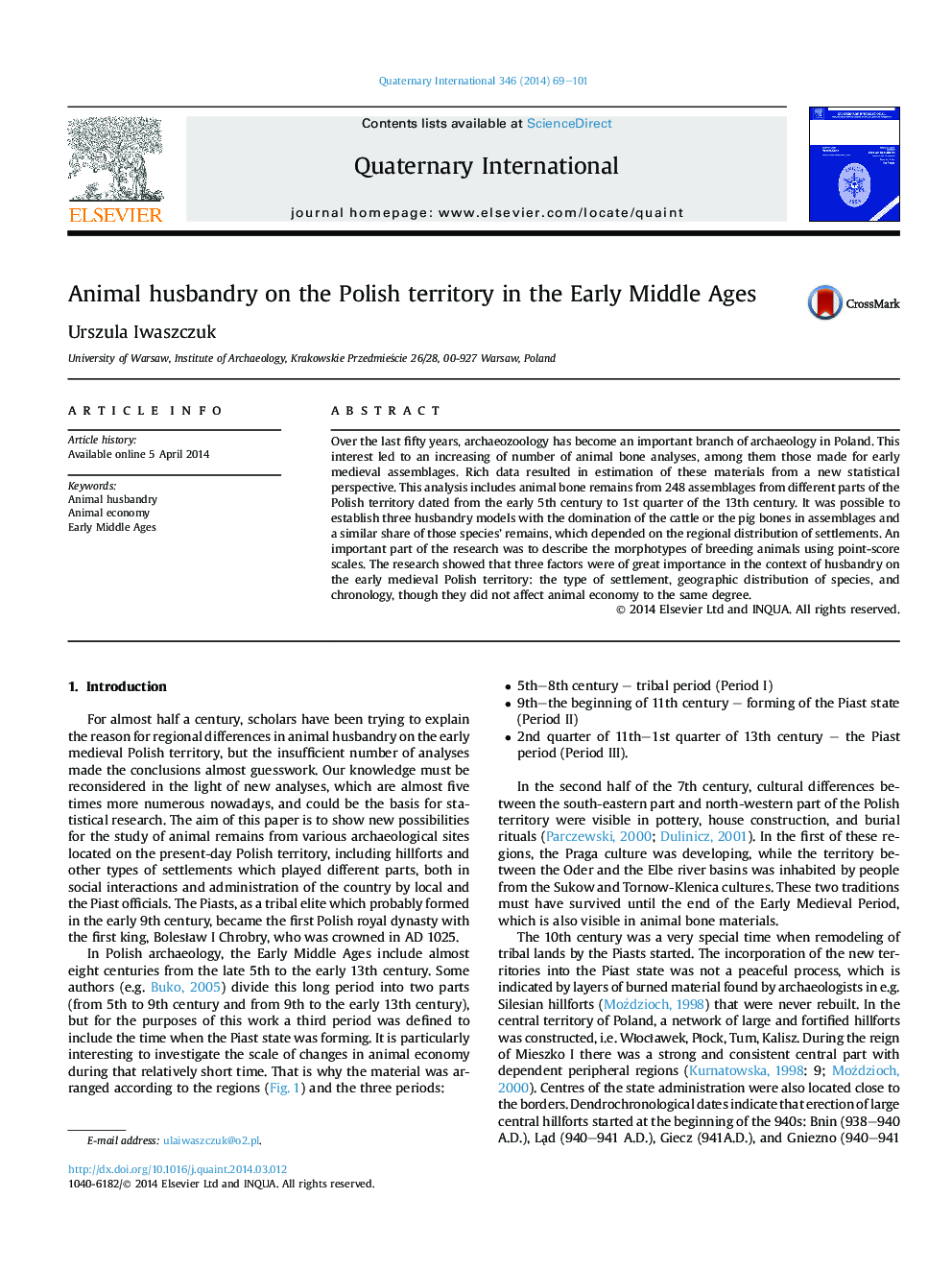| Article ID | Journal | Published Year | Pages | File Type |
|---|---|---|---|---|
| 1041290 | Quaternary International | 2014 | 33 Pages |
Over the last fifty years, archaeozoology has become an important branch of archaeology in Poland. This interest led to an increasing of number of animal bone analyses, among them those made for early medieval assemblages. Rich data resulted in estimation of these materials from a new statistical perspective. This analysis includes animal bone remains from 248 assemblages from different parts of the Polish territory dated from the early 5th century to 1st quarter of the 13th century. It was possible to establish three husbandry models with the domination of the cattle or the pig bones in assemblages and a similar share of those species' remains, which depended on the regional distribution of settlements. An important part of the research was to describe the morphotypes of breeding animals using point-score scales. The research showed that three factors were of great importance in the context of husbandry on the early medieval Polish territory: the type of settlement, geographic distribution of species, and chronology, though they did not affect animal economy to the same degree.
